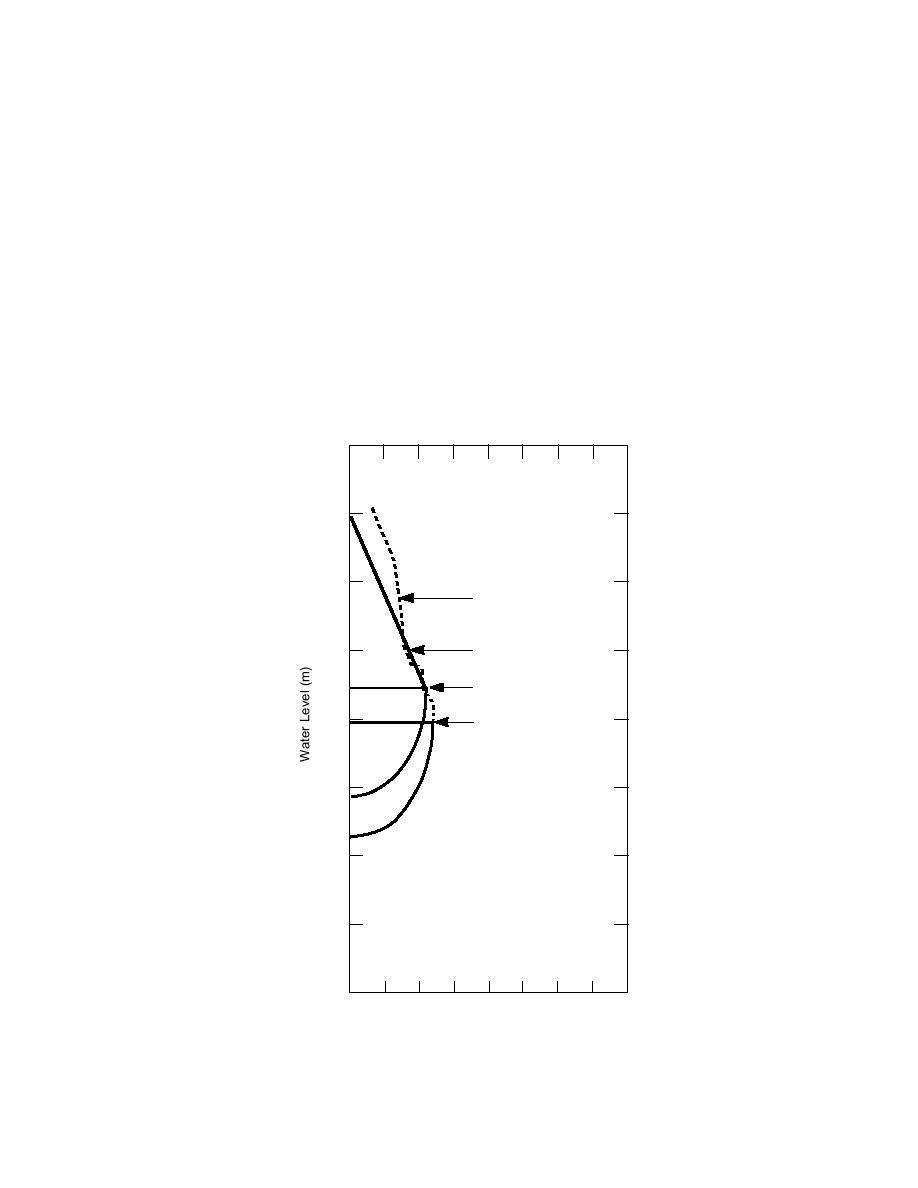
for both ellipsoid and paraboloid pool shapes and averaging the results (radii dif-
ferences due to pool shape are less than about 30 cm). Note that the predicted ra-
dius of 11.1 m at L = 86.3 m agrees with the results of the draw-down tests con-
ducted in March/April 1995, R = 13.1 2.4 m.
Composite well shape
We may use the foregoing analyses to compose our best estimate of the well
shape at the end of our collector deployments in December 1995. For the period of
water consumption, eq A7 provides a reasonable estimate for the cavity shape. In
addition, shape data from previous Rodriguez wells and our own video records
from the SPWW indicate that an ellipsoidal pool shape is reasonable for the below-
water portion of the well. Unfortunately, by not accounting for percolation, eq A7
yields an unrealistic shape for the prefire well cavity. Therefore, for period 1 (and
the short period 2) we will estimate cavity shape by using an approximation adopted
by Lunardini and Rand (1995): the ratio of pool radius/depth is approximately
constant. This ratio for period 3 ranges from 0.69 to 0.77 and averages 0.74. We used
50
60
70
Best Estimate Radius
Minimum Radius
80
Prefire Pool
90
Pool After Collector
Deployments
100
110
120
130
0
5
10
15
20
25
30
35
40
Estimated Radius (m)
Figure A7. Composite well shape, showing two possible
prefire cavity shapes.
31



 Previous Page
Previous Page
